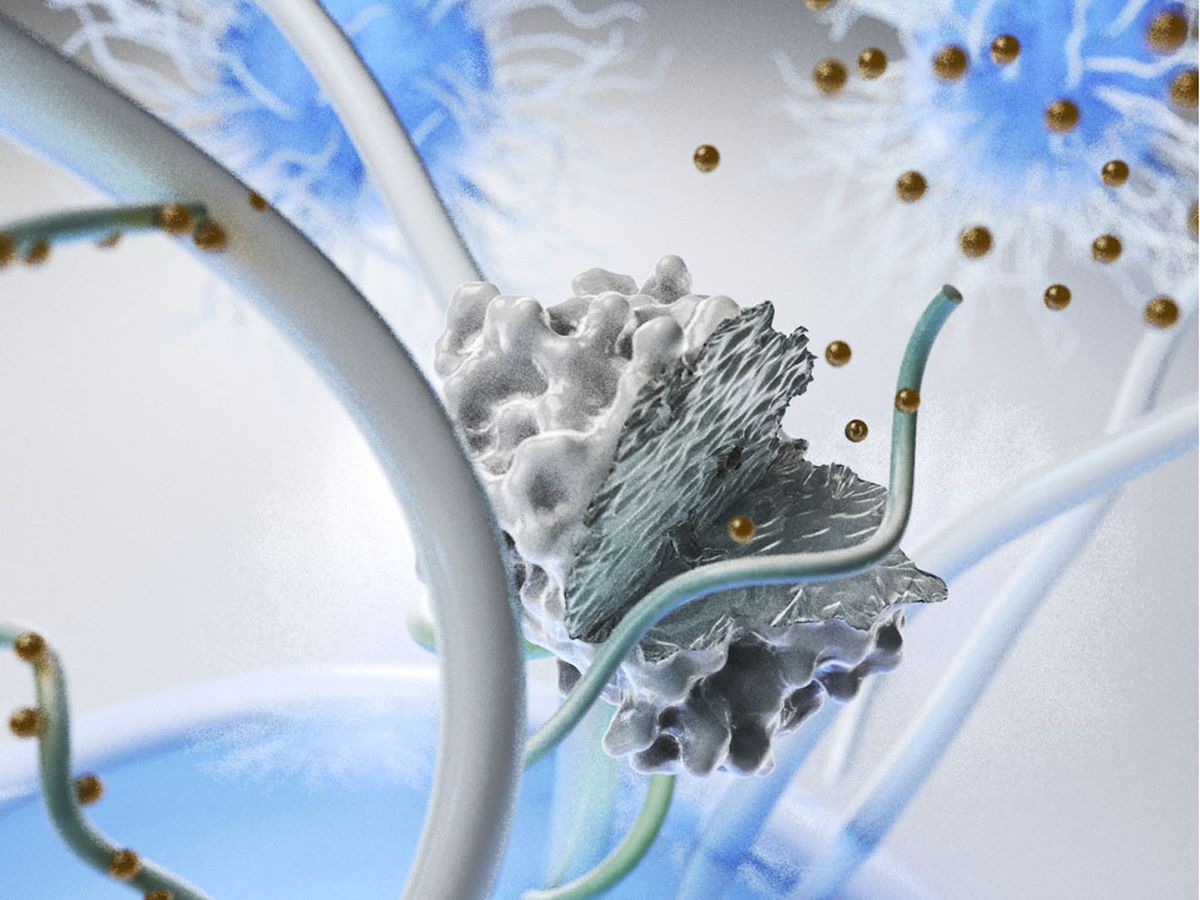Researchers have developed a new way to control the delivery of drugs to the body using nanoparticles and a weak magnetic field. The inventors, at the University of Georgia in Athens, GA tested their system with a chemotherapy drug, and published the results today in the journal Nature Catalysis.
Patients undergoing treatments for cancer and other diseases often must take drugs that affect the whole body, when they really only need the medicine in a small area. Chemotherapy drugs typically “act on all cells, killing cancer cells and also healthy cells,” says Sergiy Minko, a professor at the University of Georgia and an author of the report. As a result, “a big number of patients die because of complications” from the drugs, he says.
To address the problem, scientists have proposed all sorts of tiny gadgets that can selectively deliver drugs in the body, including organic electronic ion pumps, silicon nanowires, amoeba-like molecular robots, squishy micromachines, and robots controlled by magnetic fields.
In the new design, Minko uses nanoparticles that carry either a drug or a catalyst, and release the substances when exposed to a magnetic field. One difference between Minko’s tool and previous concepts is that the drug isn’t encapsulated inside a device, so the release is easy. And it doesn’t rely on a mechanical action or heat or salinity or light to do its job.
Minko’s nanoparticles are composed of an iron oxide core encased in a silica shell. The shell is coated with a polymer layer consisting of polyacrylic acid (PPA), and a second polymer layer of poly(ethylene glyco) methyl ether acrylate macromer (PPEGMA). The two layers form a brush-like structure that holds and shields substances from the external environment.
The brush-like structure is then loaded with the substances of interest. Half of the particles get an enzyme and the other half get a substrate that reacts with the enzyme, along with the drug of interest.
The particles would then be released into the body to drift to the area of interest, either naturally or guided by magnets or other substances. When they reach their destination, a weak external magnetic field is applied. That forces the nanoparticles together, compressing the brush-like polymer layers. When the polymer layers intertwine, the enzymes and substrates they are carrying interact, which allows the release of the therapeutic drug.
“You need to overcome the steric repulsion of the brush,” says Minko. “For that we use magnetic forces. The dipole-dipole interaction of the magnetic particles becomes stronger than the repulsive foces between the brushes.”
Minko and his colleagues tested the concept on the chemotherapy drug doxorubicin, and it worked as planned. “It hides the drug and releases it only near the cancer cells,” says Minko. He performed the experiments in the laboratory in glassware using human breast cancer cells.
As a next step, Minko wants to apply the design to delivering DNA or RNA, instead of drugs, to cancer cells in the body—sort of a biocatalysis-assisted version of CRISPR or gene therapy.
Emily Waltz is a features editor at Spectrum covering power and energy. Prior to joining the staff in January 2024, Emily spent 18 years as a freelance journalist covering biotechnology, primarily for the Nature research journals and Spectrum. Her work has also appeared in Scientific American, Discover, Outside, and the New York Times. Emily has a master's degree from Columbia University Graduate School of Journalism and an undergraduate degree from Vanderbilt University. With every word she writes, Emily strives to say something true and useful. She posts on Twitter/X @EmWaltz and her portfolio can be found on her website.



